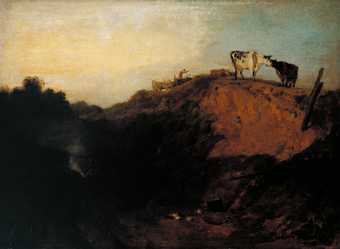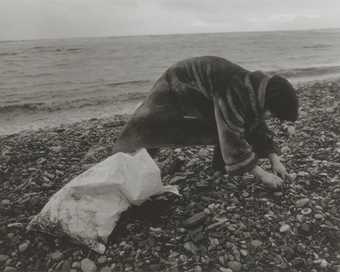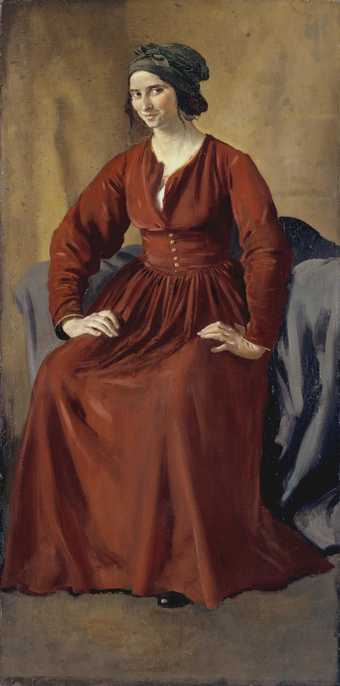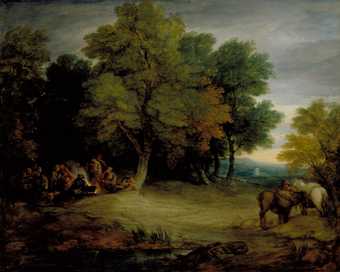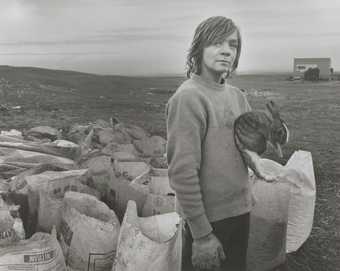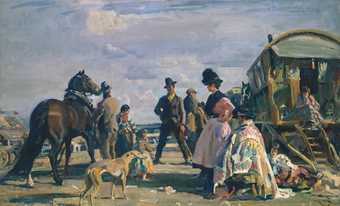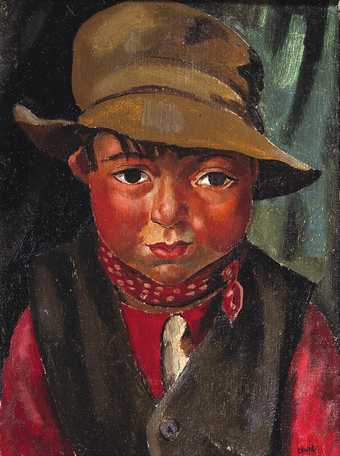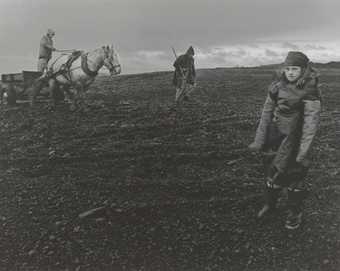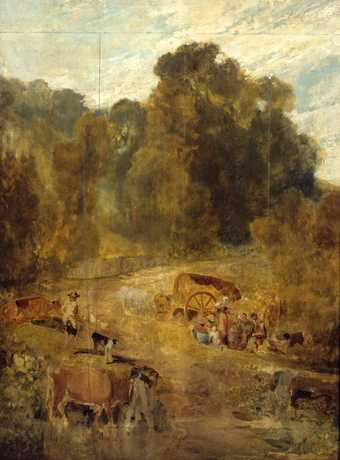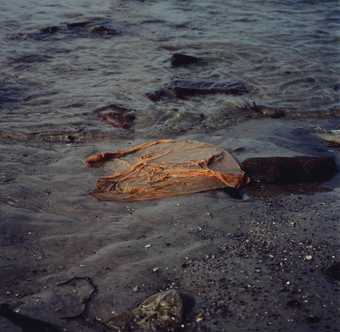Throughout a lot of history we've had to rely on the depictions and narratives of other people to show that we're here
Lois Brookes-Jones
In this short film, artist Delaine Le Bas, writer Damian Le Bas and activist Lois Brookes-Jones respond to artworks in Tate’s collection that represent members of British Gypsy, Roma and Traveller communities.
Watch the group discuss the ways in which artists and photographers have approached the subject, whether through the anonymous landscape paintings of JMW Turner or the more sensitive portraits of Laura Knight and Chris Killip.
Delaine Le Bas also takes us into the heart of the West Sussex countryside, which inspired her new performance and installation Rinkeni Pani 2022. The title of the work is English Romani for ‘beautiful water’ and refers to both her great grandmother - who urged Le Bas never to waste precious water – as well as the increasing lack of access to water experienced by populations in the face of climate emergency.
A note on language
This film includes contributions from, and discussion of artworks featuring depictions of people who belong to ethnic British Gypsy, Roma and Traveller communities.
‘Gypsy, Roma and Traveller’ is an umbrella term that includes many different and distinct groups, including Irish Traveller, Roma and Romani Gypsy people who are all recognised as ethnic minority groups under the Race Equality Act 2010. In addition, this catchall term can include New Travellers, Showpeople and Boaters because they practice nomadism as a lifestyle choice. These communities are not recognised as ethnic minority groups.
Policymakers often use ‘GRT’ as shorthand, however, this can damage the visibility of Gypsy, Roma and Traveller people when used out of context.
In some countries the term ‘Gypsy’ has been used widely as a racial slur and a derogatory or dehumanising word. However, there are Romani groups in Europe who have claimed this word and use it with pride. This includes many Romani individuals within the UK who proudly use the word ‘Gypsy’ to describe themselves. As with any identity signifiers, it’s always best to ask individuals how they identify and to use their preferred terminology.


